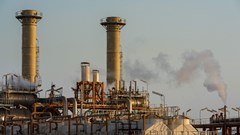AEMO's 2024 Integrated System Plan stresses critical role of gas in Australia's energy transition
The Australia Energy Market Operator (AEMO) has released its 2024 Integrated System Plan (ISP), emphasising the crucial role of gas in maintaining Australia's energy security and the urgent need for investment in new gas supplies and infrastructure.
The ISP outlines the necessity of these investments to support the nation's transition to net-zero emissions by 2050.
Urgent investment in gas supply
Australian Energy Producers Chief Executive Samantha McCulloch stressed the importance of the ISP's findings, calling on governments to act swiftly to ensure the necessary investments are made in new gas supplies.
“The ISP makes clear that gas will play an increasingly important role in keeping the lights on for Australian households and businesses. It follows AEMO’s warning last week of potential gas shortages in Victoria, with gas demand surging as a result of cold weather and reduced wind output,” McCulloch said.
McCulloch also highlighted that AEMO, along with the Australian Competition and Consumer Commission and other independent experts, have repeatedly warned about the need for new gas supply investments to prevent structural shortfalls anticipated from 2028 onwards.
Challenges and risks in energy transition
The ISP also pointed out that the energy transition hinges on timely investment decisions, which are often delayed due to regulatory uncertainties and complex approval processes for energy infrastructure projects.
These delays increase the risk of project setbacks, further complicating the transition to a sustainable energy future.
“Investment in new gas supply is now critical if we are to avoid winter gas shortages becoming the new normal,” McCulloch added, underlining the immediate need for action.
The ISP reaffirmed that gas-powered generation will become more significant in the National Electricity Market (NEM) up to 2050, as coal-fired power plants are phased out and the share of intermittent renewables grows.
To ensure the NEM remains resilient in the face of various power system and extreme weather events, an additional 13 gigawatts of gas-powered generation capacity will be required by 2050.
“As well as providing 42% of the energy used by Australian manufacturers, gas will become an increasingly important source of power generation as coal-fired power stations retire and more renewables come into the grid,” McCulloch stated.
The ISP's findings underscore the need for coordinated action and investment in gas infrastructure to support Australia's energy transition and ensure energy security for future generations.
KEEPING THE ENERGY INDUSTRY CONNECTED
Subscribe to our newsletter and get the best of Energy Connects directly to your inbox each week.
By subscribing, you agree to the processing of your personal data by dmg events as described in the Privacy Policy.
More gas & LNG news

Booming Power Demand Means Longer Wait for GE Vernova Customers

US Widens Sanctions on Iran to Target Lucrative Gas Exports

China Stops Imports of US LNG Amid Trade War, Custom Data Shows

China’s Shipowners Seek to Continue Talks With US on Levies

EU’s Costa Says Russian LNG Phase-Out Makes Room for US Supplies

Fracker Liberty’s Profit Falls to 3-Year Low as Oil Slumps

Uniper and Woodside sign LNG supply agreements

Vista Buys Petronas’ Argentina Oil Stake in $1.5 Billion Deal

Emerson launches Global LNG Solutions Centre in Qatar
















